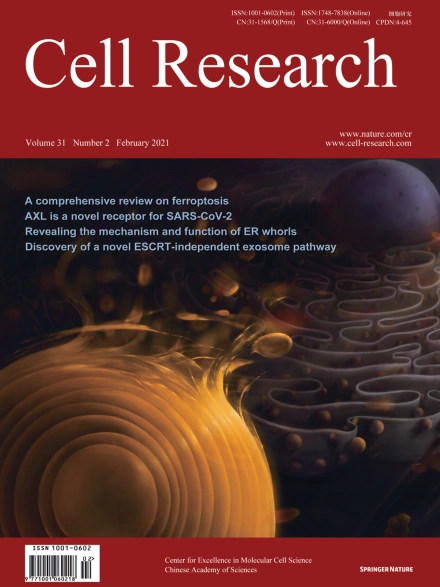
Advanced Search
Submit Manuscript
Advanced Search
Submit Manuscript
Volume 31, No 2, Feb 2021
ISSN: 1001-0602
EISSN: 1748-7838 2018
impact factor 17.848*
(Clarivate Analytics, 2019)
Volume 31 Issue 2, February 2021: 107-125 |
Ferroptosis: molecular mechanisms and health implications
Daolin Tang1,2,* , Xin Chen1,2 , Rui Kang2 , Guido Kroemer3,4,5,6,7,*
1Guangzhou Municipal and Guangdong Provincial Key Laboratory of Protein Modification and Degradation; The Third Affiliated Hospital; Guangzhou Medical University, Guangzhou, Guangdong 511436, ChinaCell death can be executed through different subroutines. Since the description of ferroptosis as an iron-dependent form of non-apoptotic cell death in 2012, there has been mounting interest in the process and function of ferroptosis. Ferroptosis can occur through two major pathways, the extrinsic or transporter-dependent pathway and the intrinsic or enzyme-regulated pathway. Ferroptosis is caused by a redox imbalance between the production of oxidants and antioxidants, which is driven by the abnormal expression and activity of multiple redox-active enzymes that produce or detoxify free radicals and lipid oxidation products. Accordingly, ferroptosis is precisely regulated at multiple levels, including epigenetic, transcriptional, posttranscriptional and posttranslational layers. The transcription factor NFE2L2 plays a central role in upregulating anti-ferroptotic defense, whereas selective autophagy may promote ferroptotic death. Here, we review current knowledge on the integrated molecular machinery of ferroptosis and describe how dysregulated ferroptosis is involved in cancer, neurodegeneration, tissue injury, inflammation, and infection.
https://doi.org/10.1038/s41422-020-00441-1